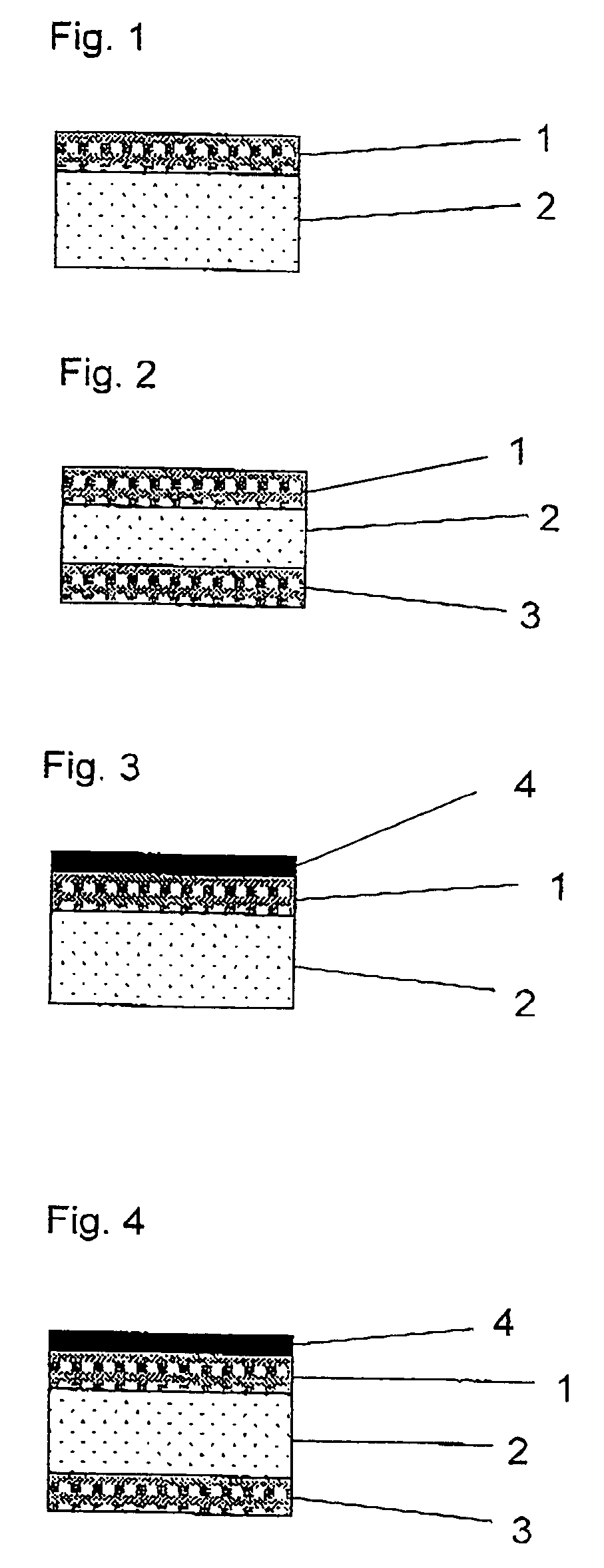Multi-layer ceramic composite material with a thermal-protective effect
a composite material and multi-layer ceramic technology, applied in the direction of electrical equipment, anti-tornado missiles, closures, etc., can solve the problems of high temperature at the nose cone of such missiles, impaired radar equipment situated behind the nose cone, and the upper limit of the usage temperature of 650 to 760°
- Summary
- Abstract
- Description
- Claims
- Application Information
AI Technical Summary
Benefits of technology
Problems solved by technology
Method used
Image
Examples
example 1
[0050]An acidic suspension was produced in that a corresponding quantity of mullite powder and aluminum oxide powder was dispersed in de-ionized water. With the pH-value of the suspension adjusted to a value lower than pH 5 by the addition of a 5 molar HNO3 solution. The suspension was deagglomerated by means of ultrasound. A little aluminum nitride powder was added to the suspension and homogeneously dispersed by means of an ultrasonic treatment. Subsequently, the low-viscosity suspension was degassed by means of a rotary evaporator in order to remove possibly trapped air. Eight oxidic woven-fabric layers with the desired dimensions were infiltrated with a suspension by means of the wet-in-wet manual laminating technique and were placed in layers to form a laminate. The laminate was airtightly closed off in a vacuum bag between metal molds and was degassed for an hour. Subsequently, during the consolidation in the closed mold, the laminate was pressed together at a pressure of betw...
example 2
[0051]For producing an aqueous sample, a cationic polyelectrolyte was dissolved in a corresponding quantity of de-ionized water. An acidic suspension was produced in that mullite, aluminum hydroxide and silica powder were dispersed in the aqueous sample, with the pH-value of the suspension adjusted to a value lower than pH 5 by the addition of a 5 molar HNO3 solution. The suspension was deagglomerated by means of a ball-type mill. A little aluminum nitride powder was added to the suspension and homogeneously dispersed by means of an ultrasonic treatment. Subsequently, the low-viscosity suspension was degassed by means of a rotary evaporator in order to remove possibly trapped air. Eight oxidic woven-fabric layers with the desired dimensions were infiltrated with a suspension by means of the wet-in-wet manual laminating technique and were placed in layers to form a laminate. The laminate was airtightly closed off in a vacuum bag between metal molds and was degassed for an hour. Subse...
PUM
| Property | Measurement | Unit |
|---|---|---|
| Temperature | aaaaa | aaaaa |
| Pressure | aaaaa | aaaaa |
| Pressure | aaaaa | aaaaa |
Abstract
Description
Claims
Application Information
 Login to View More
Login to View More - R&D
- Intellectual Property
- Life Sciences
- Materials
- Tech Scout
- Unparalleled Data Quality
- Higher Quality Content
- 60% Fewer Hallucinations
Browse by: Latest US Patents, China's latest patents, Technical Efficacy Thesaurus, Application Domain, Technology Topic, Popular Technical Reports.
© 2025 PatSnap. All rights reserved.Legal|Privacy policy|Modern Slavery Act Transparency Statement|Sitemap|About US| Contact US: help@patsnap.com



